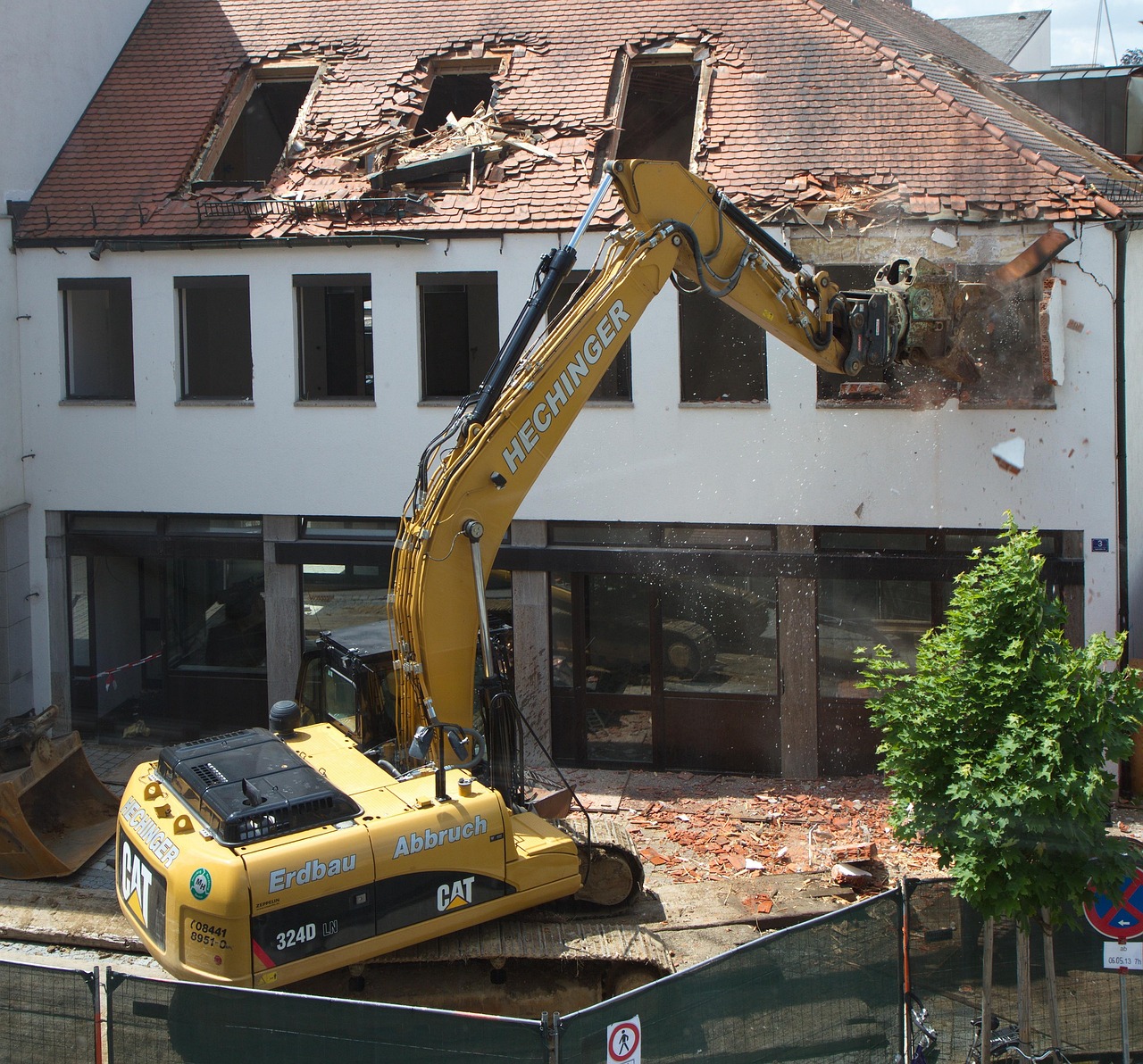How Demolition Contractors Prepare a Home for Safe Building Removal

When it comes to transforming a property, demolition contractors play a crucial role in preparing homes for safe building removal. It’s not just about tearing down walls; it’s an intricate process that requires meticulous planning and extensive safety measures. Whether seeking to renovate or clear the way for new construction, understanding how demolition contractors in Phoenix approach this task can shed light on the careful considerations involved. Join us as we delve into the essential steps these experts take to ensure that every demolition project is executed smoothly and safely.
Site Evaluation and Planning
 Before any demolition begins, a comprehensive site evaluation is essential. Contractors assess the property’s condition and identify potential hazards. This includes checking for structural integrity, hazardous materials like asbestos or lead paint, and existing utilities. Next comes detailed planning. Professionals create a strategic demolition plan tailored to the home and surrounding area.
Before any demolition begins, a comprehensive site evaluation is essential. Contractors assess the property’s condition and identify potential hazards. This includes checking for structural integrity, hazardous materials like asbestos or lead paint, and existing utilities. Next comes detailed planning. Professionals create a strategic demolition plan tailored to the home and surrounding area.
They consider local regulations, zoning laws, and environmental impact assessments to ensure compliance. Communication with homeowners is vital during this phase. Demolition contractors discuss timelines, methods of removal, and expected outcomes. This transparency helps set realistic expectations and fosters trust between clients and contractors. Securing necessary permits is crucial before any action can take place. Each step in this preparation stage lays the groundwork for a safe and efficient demolition process that prioritizes safety and community well-being.
Safety Precautions During the Demolition Process
Safety is paramount during the demolition process. Contractors take extensive measures to safeguard everyone involved. Before work begins, all workers must wear appropriate personal protective equipment (PPE). This includes hard hats, goggles, gloves, and steel-toed boots. Each piece plays a crucial role in preventing injuries from falling debris or sharp objects. Site barriers are also essential. Erecting fences keeps unauthorized individuals out of the hazardous area. Clear signage alerts passersby about ongoing work.
Proper equipment handling cannot be overstated. Operators undergo rigorous training on machinery used to minimize accidents. Regular maintenance checks ensure that tools function correctly. Dust control is another critical aspect of safety management. Water sprays can suppress dust clouds that may pose respiratory risks to workers nearby. Emergency protocols must be established before starting any job. Knowing what steps to take in case of an accident can save lives and reduce chaos when it matters most.
Post-Demolition Cleanup and Restoration
 Once the home demolition is complete, the real work begins. Cleanup is essential to ensure that the site is safe and ready for future construction. Demolition debris can be hazardous. Contractors meticulously sort through materials, separating recyclable items from waste. This eco-friendly approach minimizes landfill contribution and promotes sustainability.
Once the home demolition is complete, the real work begins. Cleanup is essential to ensure that the site is safe and ready for future construction. Demolition debris can be hazardous. Contractors meticulously sort through materials, separating recyclable items from waste. This eco-friendly approach minimizes landfill contribution and promotes sustainability.
Heavy machinery often clears large pieces of rubble quickly. However, finer details require careful attention. Smaller remnants are removed by hand to prevent damage to surrounding areas. After clearing the site, restoration steps begin. Soil erosion control measures are implemented to maintain stability in the area during subsequent projects. In many cases, landscaping may also be restored or redesigned based on new plans for development.
Conclusion
Demolishing a home …


 Moving is not something you want to leave until the last minute. As soon as you have a moving date, start planning your strategy. Create a checklist of things that need to be done and assign deadlines. This way, you can work through tasks bit by bit instead of dealing with many things right before moving.
Moving is not something you want to leave until the last minute. As soon as you have a moving date, start planning your strategy. Create a checklist of things that need to be done and assign deadlines. This way, you can work through tasks bit by bit instead of dealing with many things right before moving.


 First of all, you need to have the right tools ready before pruning your trees. You’ll need a good pair of shears, saws, loppers, and pruners. Ensure that your devices are sharp and in good condition before using them. This will help you avoid any accidents while pruning. Aside from getting the right tools ready, you need to wear the proper clothing and safety gear.
First of all, you need to have the right tools ready before pruning your trees. You’ll need a good pair of shears, saws, loppers, and pruners. Ensure that your devices are sharp and in good condition before using them. This will help you avoid any accidents while pruning. Aside from getting the right tools ready, you need to wear the proper clothing and safety gear.
 Professional commercial general contractors are often responsible for managing a construction project. It includes creating and adhering to a budget, ensuring that the project is completed on time, maintaining safety standards, and coordinating with other contractors and professionals involved in the project.
Professional commercial general contractors are often responsible for managing a construction project. It includes creating and adhering to a budget, ensuring that the project is completed on time, maintaining safety standards, and coordinating with other contractors and professionals involved in the project. They are also in charge of managing the budget. It means the general contractor needs to ensure that there is enough money for all of the project’s components and that nothing goes over-budget or takes too long to complete.
They are also in charge of managing the budget. It means the general contractor needs to ensure that there is enough money for all of the project’s components and that nothing goes over-budget or takes too long to complete.
 The first element in planning a new kitchen would be the steps to organize the layout to make the most of the available space. If you are on a tight budget or looking for ways to
The first element in planning a new kitchen would be the steps to organize the layout to make the most of the available space. If you are on a tight budget or looking for ways to  Next, it’s all about design; old-fashioned countertops are similar to those found on historic farms and add a timeless appeal to your home. Undermount sinks are becoming increasingly popular in modern kitchens because they give a sleek look and are easy to clean. The moment you have decided the fashion of your sink, you should think about the practical aspects.
Next, it’s all about design; old-fashioned countertops are similar to those found on historic farms and add a timeless appeal to your home. Undermount sinks are becoming increasingly popular in modern kitchens because they give a sleek look and are easy to clean. The moment you have decided the fashion of your sink, you should think about the practical aspects. 

